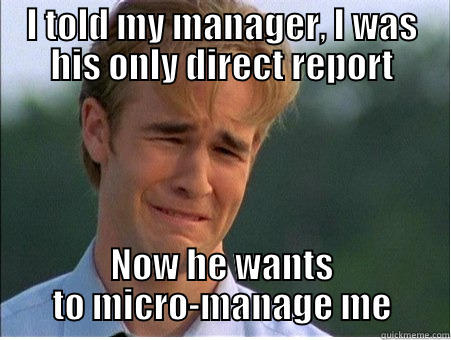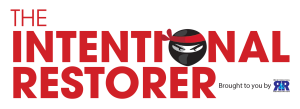Leadership development must include the skill to address dysfunction. Treating the sources of dysfunction Treating the sources of dysfunction When someone near you sneezes, do you brace yourself and think, “Great, now I’m going to get sick?” You experience the external symptom and know it reveals that this person has either had a reaction to something or that they are ill. The sneeze could carry particles of some disease that will spread to yourself and others. You may say, “Bless you,” or offer your favorite remedies for the common cold. You know that when someone sneezes (symptom) there is an underlying source. On the other hand, in business, you experience dysfunction all the time and yet get sidetracked by thinking solely about the symptoms. Symptoms are what attract our attention yet sources are where solutions must be applied. As a person in a position of leadership, it is important to intentionally develop your ability to decipher the nuances between symptoms and sources if you want to be effective with leading your team. Understanding the cost of dysfunction as a leader.What is the difference between a symptom and the source when addressing dysfunction? The online Oxford Dictionary definition of a symptom (noun) is, “A physical or mental feature which is regarded as indicating a condition of disease, particularly such a feature that is apparent to the patient.” When used in a sentence, "Dental problems may be a symptom of other illness." As noted above, you as a patient begin to experience tooth pain. The pain is a symptom of some source. It could be a cavity, a sensitive tooth or something much greater such as decay or infection. Ibuprofen may temporarily treat the symptom of pain but it will not address the source. After a few days of increasing discomfort, you decide to go to the dentist to determine the issue and discuss solutions. Interestingly, the online Oxford Dictionary uses another example which is apropo both to our culture as well as the business environment, “A sign of the existence of something, especially of an undesirable situation.” The importance of developing leadership skills that will address organizational dysfunction.The second sentence utilization from Oxford states, "The government was plagued by leaks—a symptom of divisions and poor morale." In the example, leaks (symptom) in the government were caused by divisions and poor morale (source). I would add that division and poor morale are symptoms of lack of trust and unwillingness to set aside ego for the greater good. When human interactions are involved, the source versus symptom discussion has layers of complexity.
As a person in a position of leadership, you can either peel back the layers of symptoms to address sources or the layers of symptoms can build until they overwhelm your resources and suck the life from your organization. Explore beneath the surface to determine what sources in your team are causing these dysfunctional symptoms. Addressing one layer of symptoms and sources will likely lead to opening another layer. Three key areas of focus for leaders who want to reduce dysfunction in their teams:
0 Comments
When we are not operating according to our vision, we allow office drama to sink our boat. What are your thoughts on office drama? Is it inevitable? Is it preventable? Do you enjoy hearing the latest gossip? Are you actively fanning the flames? Whether you have put much thought into it or not, office drama is costly. A study in 2008 discovered that employees in the United States spent 2.8 hours per week dealing with conflict which CPP estimated as costing over $359 billion in paid hours or the equivalent of 385 million working days. Are you still a fan (or bystander) of drama in your office?
What is that costing you if each of your employees is spending 2.8 hours or 7 % of their 40 hour work week on office drama? Our organization is a boat. We want our team members rowing together. We want to move water with our oars not be taking water into our boat. Office drama causes leaksThe calculation above doesn’t even account for the collateral damage related to the fallout from office drama. What would you gain as an organization if every employee in your office could increase engagement and efficiency by 7%? When we don’t address the leaks, we expend energy plugging holes rather than rowing. In service based industries such as property restoration, organizations are struggling to attract, develop and retain good people. We respond to floods that cause water damage to homes and businesses but we should not be allowing floods of dysfunction to needlessly drain our team’s energy. Drama that goes unaddressed by leaders leads to water flowing into the boat and resources flowing out of the organization. We need to intentionally develop:
Aligning your hiring practices with your valuesTurnover is a symptom of a leaking culture. Are you frustrated by high turnover? You feel the burden of having to continually recruit and train new employees. Beyond that pain there are hard costs for your organization as well as the demoralizing toll of strolling through the graveyard of co-workers past. Poor hiring habits and turnover are energy drains. The cycle of hiring, training and losing employees is costly. If you want to stop taking on water start by developing clarity on vision and values. Apply this clarity to the hiring process. Don’t waste your time recruiting people that have skills but are not good value or cultural fits. While you cannot control everything your team members do once they are in the organization, you can control who you allow on the team. Start respecting the process. Invest in the process of rowing togetherThe Blueprint of Success hinges on your ability to intentionally develop your people and your process. You need your people in order have a team and you need a team in order to pursue your vision. When drama starts to leak through the organization, it is important to catch it early before it becomes a flow.
We tell ourselves that we don’t have time to invest in development but somehow we have time to continually plug the holes, pump water from the boat and chase drama around the office. Start the process of facing the facts and making some progress in your process. Nothing is more important to progress than rowing together. How organizations approach training and certification has a direct effect on development and retention.In the property restoration industry we all have heard multiple employers complain that they sent their employees off to a water damage certification class only to lose them in a short period of time to their competitors. These same persons in positions of leadership believe that the issue is 100% on the employee side. If we take a step back to dig beneath the surface are we able to determine whether the symptoms give us more insight on the potential cause(s)? Organizational approach to trainingHow does your organization approach training within your team? Is training a priority in the sense that those responsible come prepared to meetings with relevant information? Often designated training time approaches with no preparation and is utilized by leadership to air out opinions on how the team is coming up short on execution. When a team has experienced water, fire and hazardous restoration employees, there are plenty of resources to facilitate sharing of knowledge from within. Questions leaders should ask about training
Organizational approach to certificationHow does your organization approach certification with your team? Is certification something that is earned and celebrated? Most organizations are one of two extremes - A) certify everyone from day one or B) certify as few persons as possible. Certification extreme A often puts the cart before the horse and produces employees who have the book smarts without any field experience which creates some tension with their trainers. Being able to quote the IICRC S500 standard reference guide for professional water damage restoration is only one of many steps to being able to successfully perform mitigation. Certification extreme B creates an environment without opportunity to expand knowledge or promotion within the team. While those in leadership would say they value industry certification, they either value it too much or do not practice what they preach. The end result is that only a few designated representatives become the information silos in the workplace. Organizational application of certificationWhether you certify everyone or only a select few, what do you do with certification on your team? If your competitors are lining up to pay your employees who have become more valuable by completing benchmarks such as IICRC S500 or EPA RRP, why are you not competing for your own internally developed resources? Common organizational responses to certification
Optimizing training and certificationLead by example. As a person in a position of leadership, are you still actively learning new things about your industry? While the leader should not be the only one acquiring certification, they should lead by example that on going education and personal development are important. When was the last time you learned and/or shared something? Invest in your greatest assets. Do you invest in regular training to develop your teams abilities and opportunities? Employee retention in the current economy is more difficult and costly than customer acquisition. Certification alone is not the cure all to employee development but it should be viewed as a valuable tool for the team as well as the team members. Celebrate achievement. Who doesn’t like to celebrate? What does your team celebrate? Do you celebrate certification both leading up to and following completion of the course? Do you make an effort to notice and share the day-to-day wins of your team? Don’t allow negativity to steer the organizationPerhaps many organizations are speaking their future into reality when they view their team members in a negative light. If you are fearful or suspicious of your people leaving the organization rather than blame them for being unreliable, make an effort to create an organization that they wouldn’t want to leave. Easier said than done, but clearly focusing on blaming others and complaining to your friends with similar negative views isn’t fixing the problem.
 How many direct reports is the most effective for a leader? How many direct reports is the most effective for a leader? Structure your team for success with the right view of span of control, interactions and direct reports. When an organization grows beyond the one-person operator delivering goods and/or services out of their garage, the process of building systems for success becomes essential to long term health. What works as a small company has to evolve as the company grows or the organization will outgrow the preceding systems. As an organization grows, adapts, changes and evolves, one question every leader and organizational system must answer is how many direct reports any given person in a position of leadership should have. At the end of the day this question has no right answer given that each organization is unique and each manager has a different threshold for efficacy. Let’s take a look at some of the metrics, discussions and insights related to the topic of finding the right number of direct reports. Gauging interactions (energy output) How do you measure efficacy when assessing the right number of direct reports? Business Insider took a peek at the number of reports of Tim Cook, the COO made CEO of Apple, who was believed to have upwards of 17 direct reports. Hal Gregersen, Ph.D., the executive director of the MIT Leadership Center states, “It's a question of how many people a leader can have a constructive conversation with when everyone is in the same room (Lebowitz, 2015).” Time is a limited resource that every manager only has so much of and trust is the greatest asset in developing employee engagement in an organization, the question is not how thin can a leader stretch themselves but how effective they can be in leading the members of their team whether directly or indirectly. Business journals and many persons in a position of leadership (PIAPOL) site Japanese management philosophy and regard 6-7 direct reports as the maximum number that a leader can effectively manage. In his own defense, Tim Cook emailed a response to Business Insider countering that, “"If you have smart people, a strong organizational culture, and a well-defined and articulated strategy that everyone understands, you can [have] numerous direct reports because your job isn't to tell people what to do.” Whether those analyzing a leader from within the organization or from the outside agree with the direction and decisions that they make, at the end of the day they will rise or fall based upon how they approach their leadership responsibilities. Measuring span of control So much of this discussion on the optimum number of direct reports is opinion based, one metric cited by Schaffer Consulting remarks that span of control is something which can be measured in this discussion, “When a manager goes from four to five subordinates, his potential interactions with them increase from 44 to 100 over a given period; and going from seven to eight subordinates raises the total interactions from 490 to 1,080 (Inc.).” This is a classic business concept that continues to be of relevance and value to organizations such as the United States Air Force in their goal of focusing missional clarity. Size of the organization obviously comes into play and the overall structure of a team must be crafted to support it’s necessary functions as well as it’s growth goals. As for the ethereal question "What is the right span of control for a manager," a consultant Jamie Flinchbaugh blogged, "Some factors to consider are: The narrower the span of control, the more coaching at the point of activity can be done; the broader the span of control, the more the entire process can be encompassed within fewer decision makers and more aligned decisions (The Build Network, 2014).” This is a simplified means of looking at the bigger picture, but a leader must analyze the position they are in with regards to the development of their organizational structure to determine where their immediate efforts are most valuable. Does the leader need to be directly involved in the training of key share holders in the building process or do they need to take a few steps back from the process to empower those on their leadership team to take ownership for their areas of responsibility. Avoiding top heavy management If the number of direct reports is too low, because the team has built multiple layers of upper and middle management to insulate those in positions of executive leadership there is a potential for disconnect. When an organization becomes slow and top heavy by way of structure, there are too many layers to weave through in order to accomplish anything in a timely or mission centered manner. As far back as 1989, Jack Welch, the CEO credited with turning GE around, was an advocate against the six direct report rule for many of these reasons. In an interview with Harvard Business Review, the management guru shared his candid thoughts on the matter, “We took out management layers. Remember the theory that a manager should have no more than 6 or 7 direct reports? I say the right number is closer to 10 or 15. This way you have no choice but to let people flex their muscles, let them grow and mature. The leader can focus only on the big important issues, not on minutiae (Tichy & Charan, 1989).” Systems should be built to support the people in the field who are making the products and/or delivering the services that make up the core functions of the organizations value interaction with the market. The question of the right number of direct reports is not a matter of ego nor strictly of science, but rather is a key discussion that will evolve with the needs of the organization in a manner that is unique to that team. Mike Myatt, Forbes contributor and chairman of N2 Growth, shares, “Where many leaders become disoriented is by confusing platform with people, and position with responsibility. Here’s the thing – it’s not about the platform, it’s about the people. Without the people there is no platform, and ultimately nothing to lead. It’s not about you (the leader), but what you can create and influence through those you lead (Myatt, 2012).” Rather than looking for the perfect number of direct reports, a leader should ask how many people they can effectively support to keep the vision and mission of the organization moving forward with relationship to the team’s values. Clarity. Consistency. Accountability. References: Lebowitz, S. (July 8, 2015) Apple CEO Tim Cook now has 17 direct reports – and that’s probably too many. Business Insider. Retrieved from http://www.businessinsider.com/apple-ceo-tim-cook-has-too-many-direct-reports-2015-7 The Build Network (April 3, 2014) Wait, how many reports direct reports did you say you have? Inc. Magazine. Retrieved from https://www.inc.com/the-build-network/direct-report-challenges.html Tichy,N., Charan, R. (October 1989) Speed, simplicity, self-confidence: An interview with Jack Welch. Harvard Business Review. Retrieved from https://hbr.org/1989/09/speed-simplicity-self-confidence-an-interview-with-jack-welch Myatt, M. (November 5, 2012) Span of control – 5 things every leader should know. Forbes. Retrieved from https://www.forbes.com/sites/mikemyatt/2012/11/05/span-of-control-5-things-every-leader-should-know/#7f921b0328c8 |
AuthorThoughts on personal and professional development. Jon Isaacson, The Intentional Restorer, is a contractor, author, and host of The DYOJO Podcast. The goal of The DYOJO is to help growth-minded restoration professionals shorten their DANG learning curve for personal and professional development. You can watch The DYOJO Podcast on YouTube on Thursdays or listen on your favorite podcast platform.
Archives
March 2023
Categories
All
<script type="text/javascript" src="//downloads.mailchimp.com/js/signup-forms/popup/unique-methods/embed.js" data-dojo-config="usePlainJson: true, isDebug: false"></script><script type="text/javascript">window.dojoRequire(["mojo/signup-forms/Loader"], function(L) { L.start({"baseUrl":"mc.us5.list-manage.com","uuid":"b9016446bd3c6a9f0bd835d4e","lid":"83282ffb9e","uniqueMethods":true}) })</script>
|
Jon Isaacson |
Connect. Collaborate. Conquer.
© COPYRIGHT 2015. ALL RIGHTS RESERVED.
|





 RSS Feed
RSS Feed